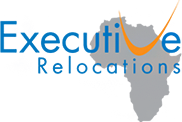Getting around while visiting Morocco
Small taxis
Small taxis are the primary mode of transportation in most Moroccan cities as their rates are very affordable. Small taxis are small official cars and cannot fit more than three people, including children, into one vehicle. Small taxis are not permitted to leave the cities.
You should expect to pay a little extra for your taxi if it picks you up in front of a large hotel. There’s a 50% standard surcharge if you take a taxi between 20:00 in the evening to 06:00 in the morning. If you have a dispute with your taxi driver, you can threaten to file a complaint against him (with his taxi number written on the front doors) to the tourist police. Most taxi drivers will try to seek an immediate solution to avoid this.
Big taxis
Big taxis are generally old, 1970s Mercedes Benzes and are the only ones that are permitted to leave the cities. Big taxis do not have a meter, instead, a broker with a notebook will sell you a ticket and show you to a specific car. Prices are only slightly higher than bus tickets and at least six people (including the driver) can fit into a big taxi.
Uber
Uber has moved to Morocco in 2015 and its success seems to be consistent. The company announced that more than 15,000 people have used its services since its launch in 2015 and it anticipates to expand further over the short term. The Moroccan subsidiary of the American start-up intends to include taxis, tourist carriers and even self-entrepreneurs to its line of services. Concretely, Uber wants to create a new trade, which for the moment is not yet governed by law. “We want to reduce unemployment, especially in the 18-34 age bracket which constitutes 60% of our drivers,” Uber said in a statement.
 +27 21 810 8000
+27 21 810 8000

Comments are closed.